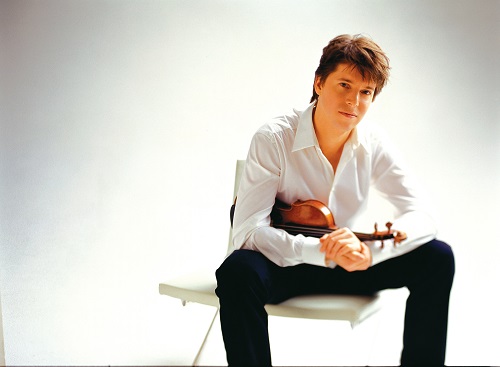 Switzerland Brahms, Saint-Saëns, Bartók: Joshua Bell (violin), Tonhalle Orchestra Zurich / Jakub Hrůša (conductor), Tonhalle Maag, Zurich, 6.12.2018. (JR)
Switzerland Brahms, Saint-Saëns, Bartók: Joshua Bell (violin), Tonhalle Orchestra Zurich / Jakub Hrůša (conductor), Tonhalle Maag, Zurich, 6.12.2018. (JR)

Brahms arr. Dvořák – Hungarian Dances Nos.17-21
Saint-Saëns – Violin Concerto No.3 Op.61
Bartók – Concerto for Orchestra Sz.116
Brahms collected more than a hundred pieces of Hungarian music and extracted elements from them, re-set them as dances for piano, for four hands. His publisher Fritz Simrock, spotting a potential money-spinner, asked Brahms to orchestrate them and Brahms said, more or less, that he would find this rather tedious, so Simrock turned to his good friend Dvořák, who kindly obliged. Dvořák started on his sets of Slavonic Dances some ten years later. The Hungarian Dances made for a perfect curtain-raiser.
Hrůša chose not the usual favourites but the lesser-known, later dances, in fact the last five of the set. These final dances are less ebullient than the earlier ones, but no less fun, even though on first hearing many of them sound remarkably similar. I would have preferred a bit less Swiss efficiency from the orchestra and, despite the conductor bobbing along like a buoy in choppy waters, more rustic abandon (such as the Czech Philharmonic might have delivered) but the dances certainly made for very easy listening.
Saint-Saëns wrote three violin concertos, the first two, in line with tradition, including cadenzas in which the soloist can show off his or her virtuosity. The third is different: whilst there are technically tricky passages in the outer movements, there is no cadenza as such. Originally, Bell had scheduled to play the Dvořák concerto – he chose something much less known and therefore much more interesting. (He has just performed the Saint-Saëns in Baltimore.)
Joshua Bell, now 50, still has a youthful mop of hair and, from a distance, in an open simple black shirt, can pass for 35. Many teenage girls were in the audience – was this his fan club or just a visiting school class? Certainly, his performance garnered more than the usual amount of cheers. Bell’s last performance in Zurich (with some Bernstein) was some five years ago, with the New York Philharmonic and Alan Gilbert. The Saint-Saëns is an uneven work, despite Sarasate’s description of it as a ‘heavenly jewel’. The first movement meanders and fails to satisfy. The work comes into own only in the endearing melodic second, slow movement; Bell swayed elegantly, and Hrůša was an attentive accompanist. The ending of the movement, with its flageolet harmonics, was beautifully executed. The final movement has the big tune and the brass fanfare, leaving a happy audience.
During the interval, an orchestra member told me they liked the conductor, saying that he had no airs or pretensions and was just a ‘natural’. That is how he came over, though in the Bartók he clearly had his own personal, not always conventional ideas on phrasing and tempo. His conception of the work revealed a novel approach to some of the familiar aspects of the score.
The year was 1944 and Bartók had been exiled in America for some years and was miserable; he was also ill with leukaemia. He told his wife he would never compose again. Thankfully, he changed his mind and created a masterpiece. The work is far from depressive, has witty passages and is much more accessible than much earlier Bartók.
The opening movement was taken slightly slower than usual, allowing for more expressive possibilities. So too was the ‘Game of the Couples’. There has been a tendency of late to play this movement faster than usual, but Hrůša went back to basics and took a restrained line. I will not mention by name all the first-rate soloists, apart from the splendid principal oboe for the concert. The orchestra’s two principal oboes being indisposed or unavailable, the Tonhalle turned to the fine principal of the Basel Symphony Orchestra, Marc Lachat. The brass section covered themselves with glory, particularly the trombones with their slides. This is a work where all sections can have a thorough workout, the harps being no exceptions. It is one of my favourite pieces of music, the flutes and piccolo reminding me of Duke Bluebeard’s Castle in the eerie slow movement.
There were a few untidy edges in the performance, perhaps pointing to a shortage of rehearsal time, perhaps due to the unusual tempi that Hrůša chose. There were also quite a few faces I did not recognise in the orchestra, which cannot have helped.
John Rhodes